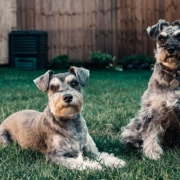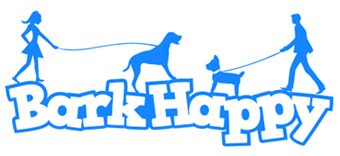Petscaping: Create the Perfect Outdoor Space for Your Dog
Author: Griffin Parrish
When it comes to owning a dog, many owners want nothing but the best for their four-legged friend. Whether it is buying the best dog food or taking them on a road trip, many owners go above and beyond to provide their dogs with a happy life. Many dog owners are even updating their yards and gardens to suit their dog’s specific needs. This process is known as petscaping.
What is petscaping?
Petscaping is the process of designing your yard in a way that provides your dog with a fun and safe place to play. This includes utilizing dog-friendly materials and creating areas specifically dedicated to your dog.
3 ways to petscape your outdoor space
Follow along to discover new ways to create the perfect outdoor space for your dog!
1. Utilize dog-friendly materials and plants
When sourcing materials for petscaping, be sure to think about the issues that dogs can bring about. If your dog is prone to digging, consider using artificial turf to prevent holes. For larger and more energetic dogs, use strong materials such as brick, paver stones, and concrete for high-traffic areas.
If you plan to let your dog run free, be sure to install a wooden, metal, or wire fence to ensure your pup can’t escape. If your backyard also features a garden, consider installing additional fencing to discourage your dog from snacking on your plants.
When including plants in your petscaping process, be sure to avoid any that could be toxic to your dog. A few examples of plants to avoid include:
- Azaleas
- Ivy
- Lily
- Sago palm
- Tulips
For a complete list of plants to avoid, check out this guide from ASPCA.
2. Add fun features for your dog to enjoy
As you design your outdoor space, think about fun additions that your dog will love. If you have a dog that loves to run around, install an obstacle course to keep them entertained.
Does your dog love water? Consider adding a water feature or splash pad for your dog to play in. This can also be a great way for your dog to beat the summer heat.
Another great petscaping addition is installing a dog house. A dog house is a great place for your dog to lounge and rest. Be sure to consider your climate when selecting or building your dog house. If you live somewhere cold, be sure to add a heater and some blankets.
3. Keep up with seasonal maintenance
Depending on the time of year, there are different things to consider when petscaping your yard. By following these tips, you can ensure that your dog is happy and safe all year round.
- Spring
- Ensure your yard has proper drainage for rain showers
- Treat the area for incoming pests
- Summer
- Provide an area for your pet to cool off
- Cut your lawn regularly to keep pests away
- Fall
- Regularly rake and remove leaves to keep your lawn clean
- Trim your trees to prevent any falling limbs
- Winter
- Keep your dog house warm using heaters and blankets
- Regularly shovel snow
- Avoid salting any areas your dog might walk on, as it can damage their paws
Sit back and enjoy the fun
Now that you have a great outdoor space for you and your dog, you can invite others to enjoy it too. A petscaped backyard is a perfect place to socialize your pup while making new friends yourself.
By using BarkHappy, you can connect with other dogs nearby and set up playdates. Not only is this great for your pup, but it is also an awesome way for dog owners to make new friends.
With your new petscaped yard and some seasonal maintenance, you now have a great place for you and your pup to enjoy year after year, no matter the season.
Author: Griffin Parrish

 Photo Courtesy of Sebastian Coman Travel on Unsplash
Photo Courtesy of Sebastian Coman Travel on Unsplash







